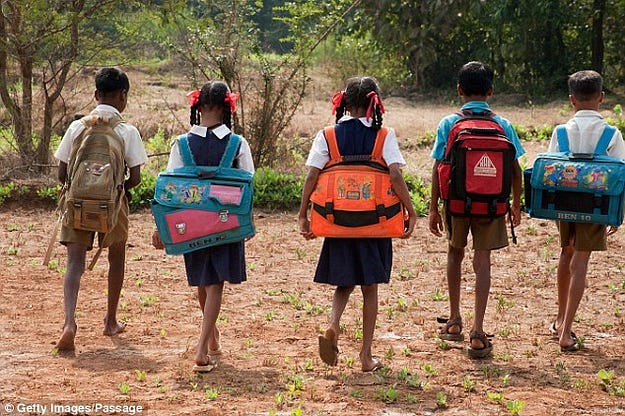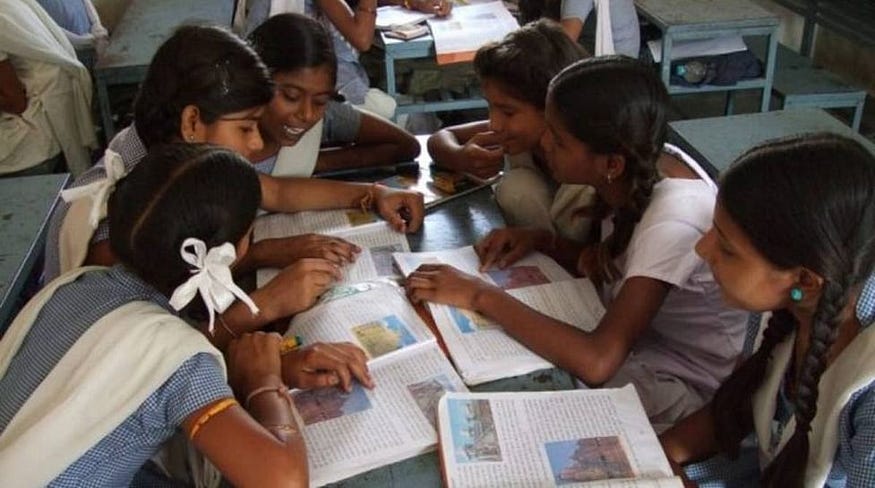Education is a crucial element for the development and growth of society. And in the case of India, Article 21-A of The Constitution (Eighty-sixth Amendment) Act, 2002 entitles all children between the ages of six and fourteen to the fundamental right of free education. However, despite education becoming a fundamental right, many children drop out of school at a very young age, more often observed in young girls.

Reason for the alarming rate of drop-outs
Inclusive of both male and female school students, the rate of secondary school drop-out students has been recorded at an alarming 17%, according to a report with details for 2019–20. Surprisingly, this percentage includes more boys (18.3%) than girls (16.3%). In the case of girls, the lowest drop-out rate has been recorded in Punjab, with 0%, as opposed to Assam’s 35.2% female drop-out rate being the highest.
The reasons for this can be considered multi-faceted, with the primary reason being the need to support their families by entering the workforce before completing their education. This also relates to the reason that most families where children drop out are due to the lack of finances necessary to send the children to school and the entire family to survive.
Importance of educating girls
While education has been essential since times immemorial, the need to educate girls is more urgent than ever. In the current society, where people are slowly becoming more aware of gender equality, girls need to be equipped to survive and sustain themselves. Basic education can act as the foundation that they use to lift themselves, while quality higher education can help them to empower themselves and take charge of their own lives.
In reforming India, where the centuries-old patriarchal mindset has been changing, educating girls has become a crucial step. Only when all children are provided equal education regardless of their gender can India as a whole become even more capable of becoming a nation to look up to.

Impact of dropping out of school on the lives of young girls
With education becoming as important as it has, dropping out before completing education can have an immense mental and psychological impact on a girl child. This impact primarily arises because India has been a patriarchal society for years, with male education having been very obviously prioritised over female education. And by educating girls, they are given a weapon with which they can pursue a better future without relying on their families.
However, dropping out, especially when it is done unwillingly and due to financial constraints, ultimately forces them back into a life where they need to work to survive. In this way, it stagnates the way females are still perceived in society and limits their opportunities, further increasing the omnipresent gender gap.
The pandemic and how it has led to increased drop-outs
The Right to Education Act introduced to the constitution has been instrumental in reducing the number of children out of school, from an astonishing 13.46 million in 2006 to just six million in just eight years in 2014. However, the pandemic crisis over the last 2 years has undone a lot of the progress that the Act achieved.
According to a policy brief released by the National Right to Education forum, approximately 10 million girls were found to be at risk of having to drop out amidst the pandemic. With related issues like rising unemployment and the need to shift to an online-based education model, many families in low-income groups have become unable to afford education, which has become more of a luxury than a necessity. In such families, the survival of the members is much more crucial than education, leading to girls being forced to drop out to accommodate the needs of their families.
You can support more such causes here.
At Donatekart, we’re constantly striving to curate the most relevant and engaging content just for you. If you loved reading this, then women leaders in the Indian startup ecosystem will grab your attention too.


